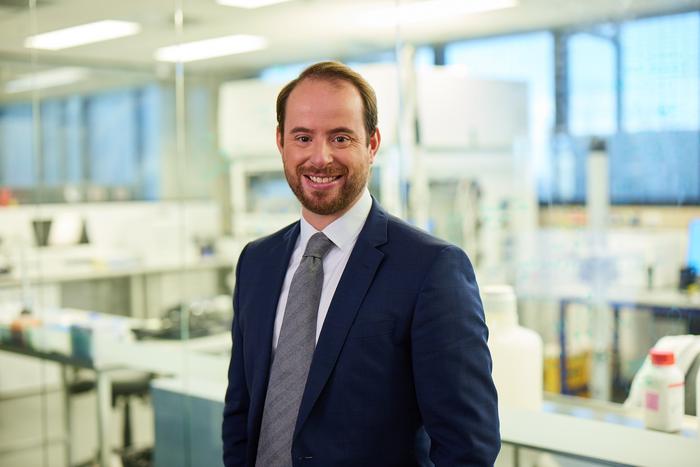Illumina, a global genomics and human health company, has partnered with the Garvan Institute of Medical Research’s TenK10K project to help transform the treatment of complex diseases, starting with autoimmune diseases, with a joint investment of $27 million AUD.

Credit: Garvan Institute
Illumina, a global genomics and human health company, has partnered with the Garvan Institute of Medical Research’s TenK10K project to help transform the treatment of complex diseases, starting with autoimmune diseases, with a joint investment of $27 million AUD.
The Garvan Institute plans to map 50 million human cells from 10,000 people to identify unique genomic fingerprints of autoimmune diseases, heart diseases and cancer, building on the early success of a clinical trial for Crohn’s disease.
Crohn’s disease affects more than 80,000 Australians. As with many autoimmune diseases, predicting which treatments will work best for which patients is currently impossible. The OneK1K clinical trial across 10 Sydney hospitals shows that a genetic fingerprint project led by the Garvan Institute can help match individual patients with the most effective treatment.
Illumina is supporting the project with supplies, equipment and specialist research support, which will provide a critical boost for Garvan’s single-cell and whole genome sequencing research and enable upscaling to make the TenK10K project the largest project of its kind. The investment will enable the Garvan Institute to improve how accurately disease-linked immune cell fingerprints can be identified and develop:
- Commercial tests to identify the right therapy for challenging autoimmune diseases including multiple sclerosis, rheumatoid arthritis, lupus, type 1 diabetes, spondylitis, inflammatory bowel disease, and Crohn’s disease
- Early trials of powerful new RNA therapies
- Potential early targets for treatments for cancers and long COVID
- Tests to track the aftermath of heart attacks and identify risk of sudden death.
“This work has the potential to enable a significant step forward in personalised medicine. In 2022, in a paper in Science, we announced that we had analysed the genomic profile of more than one million cells from 1,000 people to identify markers of autoimmune disease,” says Professor Joseph Powell, leader of the OneK1K and now TenK10K project at the Garvan Institute of Medical Research. “We were able to do this using single-cell sequencing, a new technology that allows us to detect subtle changes in individual cells,” he says.
“That led to a proof-of-principle clinical trial at 10 Sydney hospitals to see if we can improve the treatment of Crohn’s disease. The early results suggest we can predict a patient’s response to a therapy based on their genetic profile. Through single-cell sequencing, which analyses individual cells rather than an average of many cells, we can see fingerprints that we’ve never been able to distinguish before.”
“Now, with the help of Illumina, TenK10K will build on this work to generate single-cell data on around 50 million cells from 10,000 individuals to further improve the accuracy of predicting disease risk and treatment response. This research will help identify the subtle genomic differences in everyone’s cells, which will help us speed up diagnosis and treatment for many diseases. We are excited by translational opportunities that come from combining this globally leading biotechnology resource with advanced machine learning methods,” says Professor Powell.
NSW Minister for Medical Research David Harris congratulated Garvan Institute of Medical Research and Illumina on this unique partnership.
“This partnership will help advance the field of genomics and personalised medicine, delivering benefits to patients across NSW,” Mr Harris said.
“The future of this work will allow for next-generation sequencing of patients’ genomic data to ensure they receive more personalised treatment for chronic and autoimmune conditions.
“NSW has a strong history of investing in ground-breaking genomic research. New collaborative partnerships such as these are vital to ensure NSW continues to be a world leader in delivering cutting-edge and truly translational research that will help meet the challenges and needs of future health care delivery.”
“In 2007 at age 11 I was diagnosed with ulcerative colitis,” says Madeleine Jandura.
“Over the next twelve years I had to deal with countless doctors and specialist visits, blood tests, scans, colonoscopies, emergency visits, long hospital stays, and countless ever changing oral and intravenous medications. After exhausting all options with medications, I spent the next five years undergoing four major surgeries.”
“Now I am finally rid of this disease, though I will have to deal with the impacts of it for the rest of my life and the possibility it may return.”
“I am excited to hear now how Joseph and his team are working to get faster answers and faster treatments,” she says.
Professor Benjamin Kile, Executive Director of the Garvan Institute says: “This partnership is a testament to the world-leading research happening at Garvan, leveraging our unique expertise across clinical and research fronts. This innovative research is set to transform patient care for some of the most difficult-to-treat diseases.”
“A few years ago, this project would have been impossible,” says Illumina’s Simon Giuliano, commercial lead for Oceania. “Now we have the technology to rapidly and cheaply detect the difference in the genomics of individual cells using next-generation sequencing. And that opens up the potential of a new era of personalised health, where the variation in every human cell flags the right treatment for an individual’s disease, avoiding the trial and error in the past.”
Method of Research
Experimental study
Subject of Research
People



